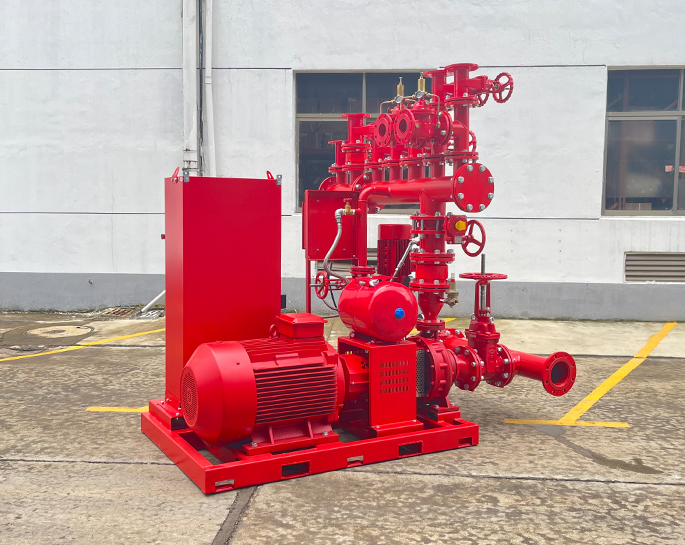Fire pump leakage can occur for various reasons, and it's crucial to address these issues promptly to maintain the pump's efficiency and reliability. Here are some common causes of fire pump leakage:
Seal Wear or Damage:
The seals in a fire pump play a critical role in preventing water leakage. Over time, seals can wear out or become damaged, allowing water to escape.
Loose or Damaged Fittings:
Loose or damaged fittings, such as bolts, nuts, and gaskets, can lead to leaks. Regular inspections and tightening of fittings can help prevent this issue.
Corrosion:
Corrosion of pump components, including the casing and fittings, can compromise the integrity of the pump and lead to leaks. Corrosion may be caused by exposure to moisture, chemicals, or other corrosive substances.
Improper Installation:
Incorrect installation of the pump or its components can result in misalignments or other issues that contribute to leakage.
Cracked Casings:
The pump casing can develop cracks due to various factors, including stress, impact, or corrosion. Cracks in the casing can lead to water leakage.
Worn or Damaged Impeller:
The impeller is a critical component that can experience wear or damage. A damaged impeller may not function correctly, leading to inefficiencies and potential leaks.
Faulty Seals or Gaskets:
Seals and gaskets are used throughout the pump to maintain water-tight integrity. If these components are faulty or improperly installed, leaks can occur.
High Pressure:
Excessive pressure within the pump system can cause seals and gaskets to fail, leading to leaks. This may result from a malfunction in the pressure relief valve or other pressure-regulating components.
Pump Cavitation:
Cavitation occurs when vapor bubbles form in the pump due to low pressure, and when these bubbles collapse, they can cause damage to the impeller and other components, leading to leaks.
Temperature Extremes:
Extreme temperatures, whether too hot or too cold, can affect the materials used in the pump, leading to expansion, contraction, or brittleness that may contribute to leaks.
Inadequate Lubrication:
Lack of proper lubrication in the pump's bearings and seals can lead to increased friction and wear, increasing the risk of leaks.
Material Compatibility:
Incompatibility between the materials used in the pump and the transported fluid can result in corrosion or deterioration, leading to leaks.
Regular inspections, proper installation, routine maintenance, and addressing issues promptly are essential for preventing and mitigating fire pump leakage. Additionally, following manufacturer guidelines and industry standards can help ensure the proper functioning of the fire pump system.



